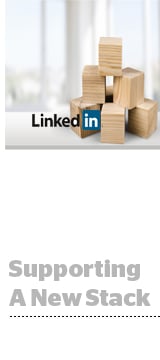 LinkedIn has finally launched a feature that has been available to marketers on Facebook for three-plus years.
LinkedIn has finally launched a feature that has been available to marketers on Facebook for three-plus years.
The site rolled out conversion tracking for sponsored content and text ads on Thursday after a serious overhaul of its tech infrastructure.
At its most basic level, the feature lets marketers determine if a user converted after clicking or viewing an ad. The tool is not yet available for Sponsored InMail, but that’s coming soon.
In theory, deeper insights into conversion could help marketers identify factors influencing ROI.
For example, they may be able to determine that directors of product marketing convert at twice the rate as CMOs. LinkedIn hopes this capability will address broader marketing pain points beyond its own walls.
“We should have put [conversion tracking] out a long time ago, but we wanted to do it in a way that really took advantage of LinkedIn’s data set,” said Russ Glass, VP of products for LinkedIn Marketing Solutions. “We wanted to make sure it was a universal pixel that laid the groundwork for more features to come.”
Another historical absentee from LinkedIn’s marketing tool set: retargeting, which Glass said will eventually run on the same infrastructure as conversion tracking.
“In the future, we’ll be hooking up all this conversion data to help marketers identify the most likely conversion scenarios,” Glass said. “[Instances] where we’ll see all the way down to revenue and into the CRM system and do more with that data. We’re not there, but I’m bullish about the potential.”
LinkedIn had to overhaul much of its marketing infrastructure and product strategy to support these additional features.
When LinkedIn bought B2B data platform Bizo in 2014, it aspired to create a unique platform that enabled marketers to target professional audiences at scale.
The realities of that undertaking proved challenging. LinkedIn’s lead-generation system was sold separately from its campaign management tools, complicating its go-to-market strategy. The underlying technology infrastructure was also clunky.
“There were different systems to render the ad, handle the targeting component and the forecasting element,” Glass explained. “We brought all of that together and unified it so that one system is now multitenant and accepts more ad formats.”
The overhaul reduced latency by more than 30%. The time it took internal teams to manage these disparate workflows also declined 40%.
Glass claims LinkedIn can now innovate far faster and speed up delivery of new ad products.
“There was no way to innovate at the pace this industry was moving without fundamentally changing how our architecture worked,” Glass said.
Generating custom lists is another gaping hole in LinkedIn’s marketing stack. Facebook already has Custom Audiences and Twitter has Tailored Audiences, allowing marketers to upload their CRM lists and target specific groups or segments of IDs, but LinkedIn had yet to follow suit.
LinkedIn rolled out a quasi-custom audiences feature in March, which applied the same idea to company-based targeting, but Glass says stay tuned.
“We have a pretty good backlog of features we’re working on,” he said. “I can say we’re actively working on additional custom audiences features, but there’s no hard timeline on when we’ll be releasing those to market.”













